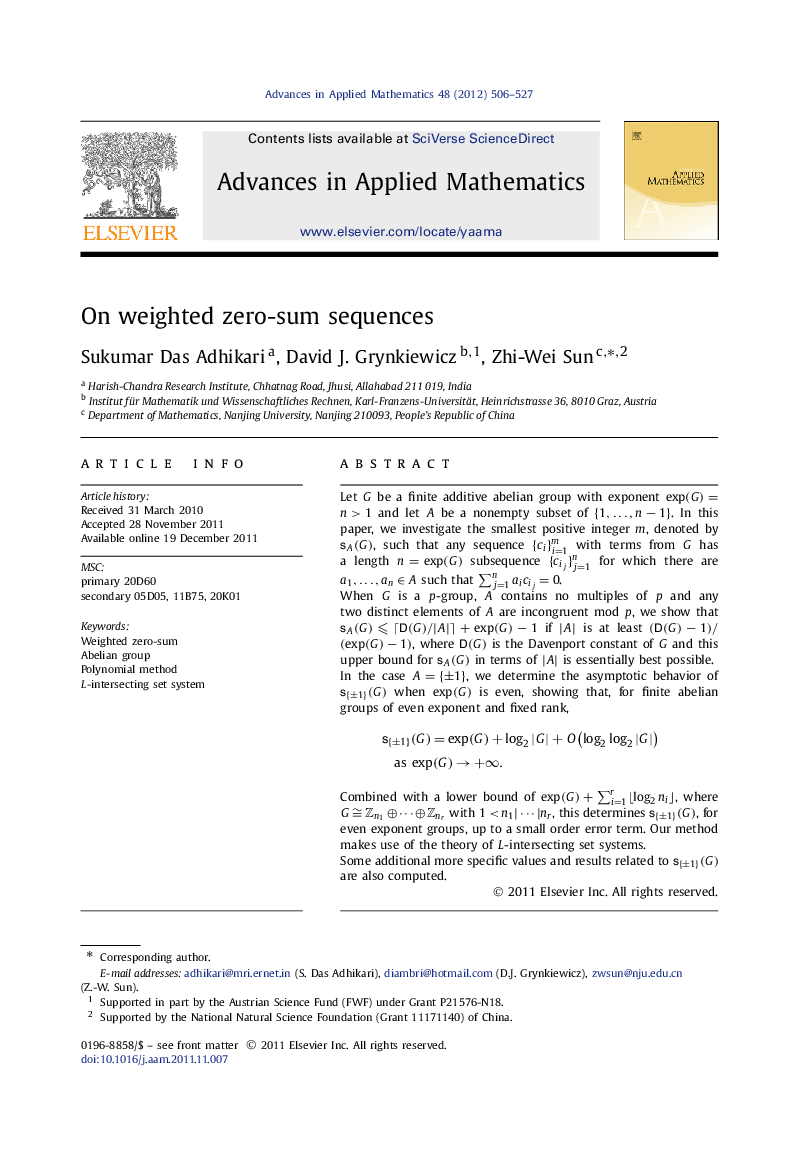| Article ID | Journal | Published Year | Pages | File Type |
|---|---|---|---|---|
| 4625010 | Advances in Applied Mathematics | 2012 | 22 Pages |
Let G be a finite additive abelian group with exponent exp(G)=n>1exp(G)=n>1 and let A be a nonempty subset of {1,…,n−1}{1,…,n−1}. In this paper, we investigate the smallest positive integer m , denoted by sA(G)sA(G), such that any sequence {ci}i=1m with terms from G has a length n=exp(G)n=exp(G) subsequence {cij}j=1n for which there are a1,…,an∈Aa1,…,an∈A such that ∑j=1naicij=0.When G is a p-group, A contains no multiples of p and any two distinct elements of A are incongruent mod p , we show that sA(G)⩽⌈D(G)/|A|⌉+exp(G)−1sA(G)⩽⌈D(G)/|A|⌉+exp(G)−1 if |A||A| is at least (D(G)−1)/(exp(G)−1)(D(G)−1)/(exp(G)−1), where D(G)D(G) is the Davenport constant of G and this upper bound for sA(G)sA(G) in terms of |A||A| is essentially best possible.In the case A={±1}A={±1}, we determine the asymptotic behavior of s{±1}(G)s{±1}(G) when exp(G)exp(G) is even, showing that, for finite abelian groups of even exponent and fixed rank,s{±1}(G)=exp(G)+log2|G|+O(log2log2|G|)asexp(G)→+∞. Combined with a lower bound of exp(G)+∑i=1r⌊log2ni⌋, where G≅Zn1⊕⋯⊕ZnrG≅Zn1⊕⋯⊕Znr with 1
